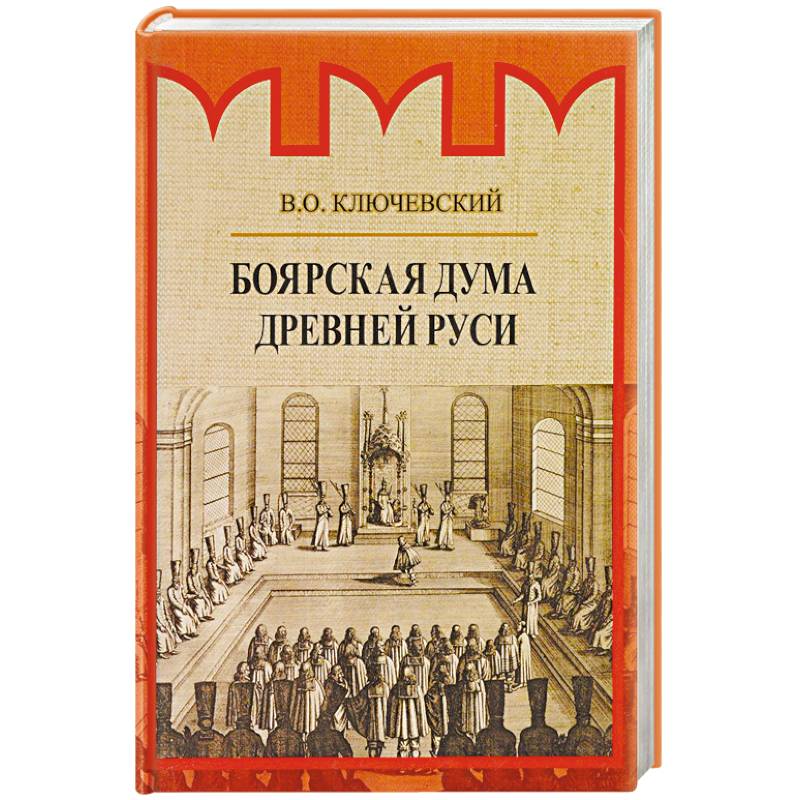Boyar Duma of Ancient Russia
Please sign in so that we can notify you about a reply
Vasily Osipovich Klyuchevsky went deeper into work on the doctoral dissertation "Boyarsky Duma of Ancient Russia" in 1872 and painstakingly worked on it for almost ten years (until 1880 -1881).
Calling the Boyarsky Duma "flying wheel of the Old Russian administration", Klyuchevsky gives a colossal panorama of the social life of Russia from ancient times to the end of the 17th century. The formation of cities around the shopping centers of the Great Water Way, the origin and essence of the specific order in North-East Russia, the composition and political role of Moscow boyars, the Moscow autocracy, the bureaucratic mechanism of the Moscow state of the 16th-XVII centuries. - All this is supplied with a thorough socio-economic analysis.
Before the reader of the "Boyarsky Duma" passes as living typical figures of ancient Russian history: here the specific prince is the master -scopid, and the noisy, but tightly clamped in the capitalist fist, the Novgorod man is a “vessel”, and the Moscow boyar is a prince who knows The Government price, proud of his Yaroslavl genealogical past and gallually condemning royal autocracy, is the Moscow king himself, ruling along with the boyars, sending them to the “Dalneconal” campaigns, and with personal complacency, pushing them out of the meeting of the Duma, here and " Pinatter " - an eternal payer who is trying to hide, to" reduce "payments, but constantly captured more and more often as a fiscal network, is the royal" orphan ".
The book can be recommended by a wide reader audience
Calling the Boyarsky Duma "flying wheel of the Old Russian administration", Klyuchevsky gives a colossal panorama of the social life of Russia from ancient times to the end of the 17th century. The formation of cities around the shopping centers of the Great Water Way, the origin and essence of the specific order in North-East Russia, the composition and political role of Moscow boyars, the Moscow autocracy, the bureaucratic mechanism of the Moscow state of the 16th-XVII centuries. - All this is supplied with a thorough socio-economic analysis.
Before the reader of the "Boyarsky Duma" passes as living typical figures of ancient Russian history: here the specific prince is the master -scopid, and the noisy, but tightly clamped in the capitalist fist, the Novgorod man is a “vessel”, and the Moscow boyar is a prince who knows The Government price, proud of his Yaroslavl genealogical past and gallually condemning royal autocracy, is the Moscow king himself, ruling along with the boyars, sending them to the “Dalneconal” campaigns, and with personal complacency, pushing them out of the meeting of the Duma, here and " Pinatter " - an eternal payer who is trying to hide, to" reduce "payments, but constantly captured more and more often as a fiscal network, is the royal" orphan ".
The book can be recommended by a wide reader audience
Author:
Author:Klyuchevsky V.
Cover:
Cover:Hard
Category:
- Category:Biographies & Memoirs
- Category:History & Geography
- Category:Culture
Publication language:
Publication Language:Russian
Series:
Series: History of Russia
ISBN:
ISBN:978-5-8291-2142-6
No reviews found
